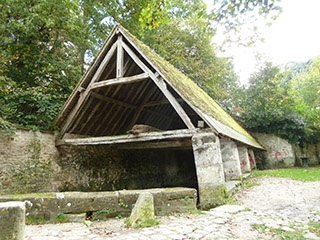Prochain point : lat="49.1616" lon="1.7989"

Leather Work
Quality craftsmanship
The evolution of a skill...
Magny-en-Vexin developed its leather-making expertise in the Middle Ages, benefiting from the favourable conditions on the road from Paris to Rouen and along the Aubette. The eighteenth century saw the craft reach its peak, with the number of people working in the industry rising from 51 to 96. Of the seven guilds recorded in Magny, two - the shoemakers and tawers - reflect the importance of leather, and the quality of their work increased their reputation. Huge amounts of boots and clogs were made in Magny-en-Vexin for the troops or to supply the major cities (Paris, Saint-Germain, Versailles, Mantes and Pontoise). Industrial production in the nineteenth century proved the undoing of most of these small artisans, with only 23 still operating in 1911.
... requiring a complex chain of operations
The leather industry required many craftsmen to work for many months. The first step was to prepare the hides, which was the task of the tanners, tawers, curriers and Hungarian-style tanners. The raw hides, which came directly from the butchers, were cleaned in the Aubette in Magny. They were then soaked in tanks of water and lime before being shaved and deburred. Afterwards they were impregnated with tan (crushed oak bark), beaten or trampled and finally dried. The curriers and Hungarian tanners delivered more supple, shiny and lustrous leather, whereas the tawers were only concerned with thin skins (sheep, goats, lambs and calves) that they blanched with lime. Other craftsmen made the finished products. Magny-en-Vexin boasted few skinners (furriers) or glove-makers but several harness makers (saddles and harnesses for ploughing) and saddlers (whips, saddles, reins and stirrups) and large numbers of cobblers. These craftsmen formed a closed world, creating dynasties such as the Chesnay family, well-to-do tanners on Rue Basse, whose business closed its doors in 1888.





